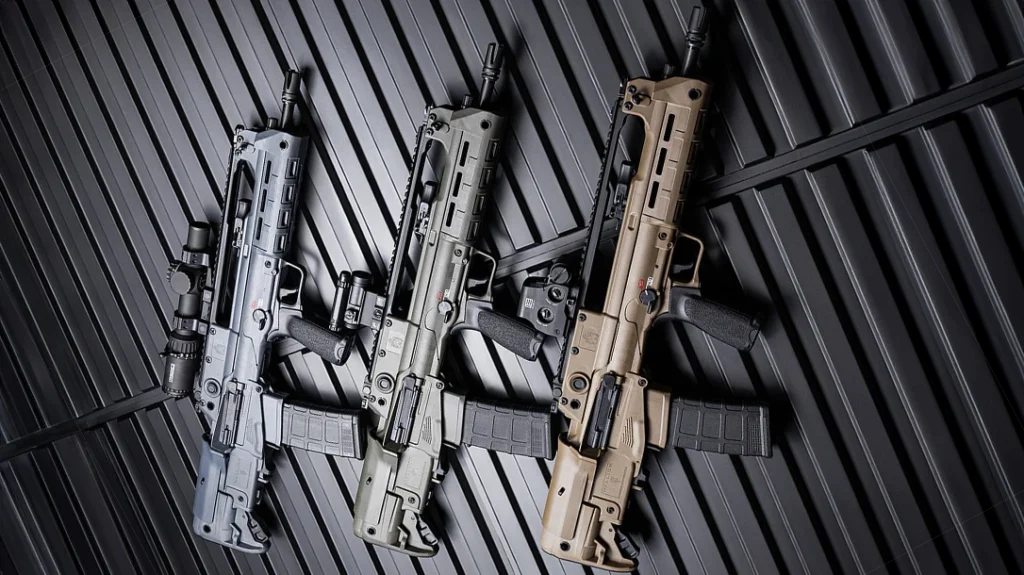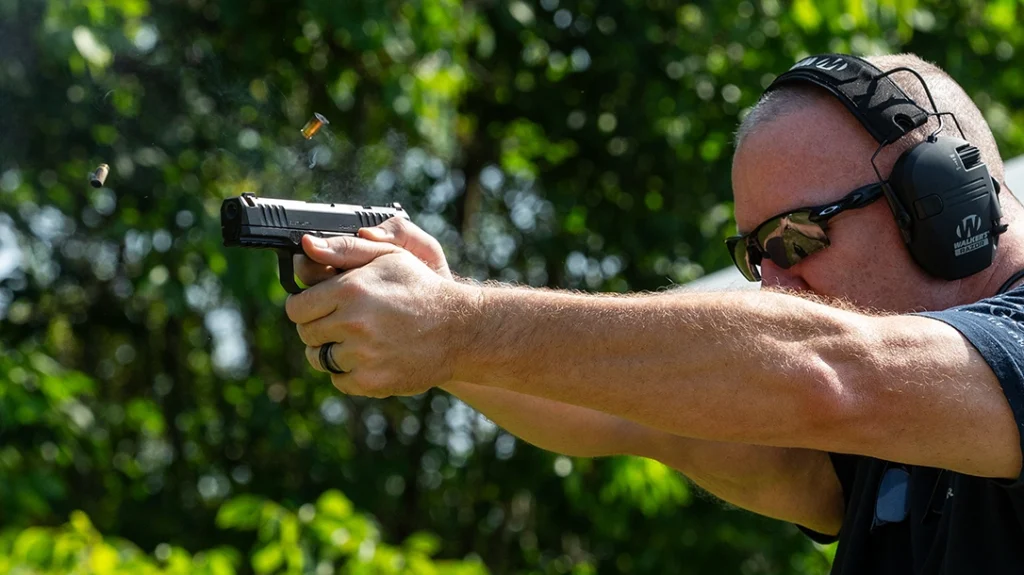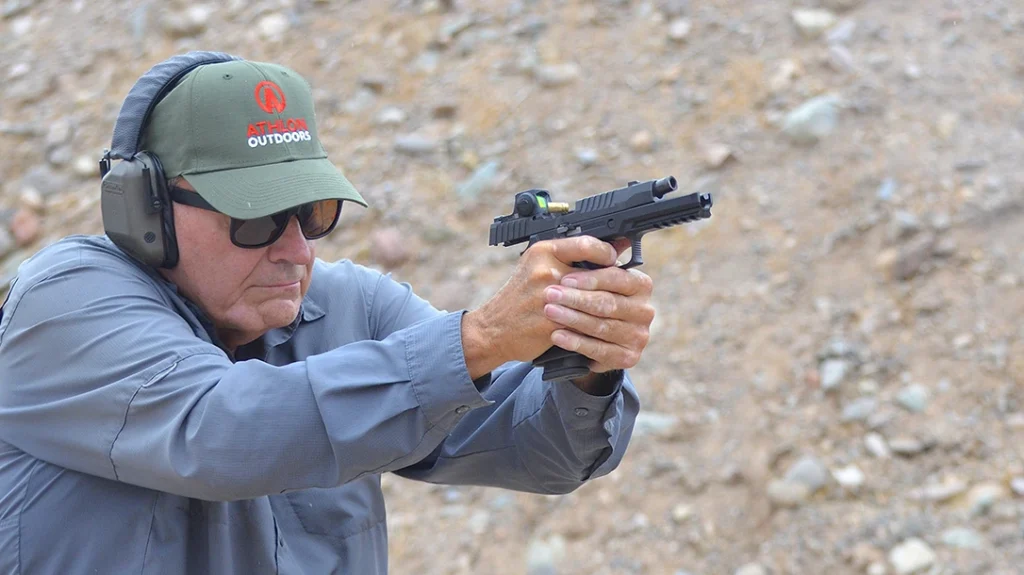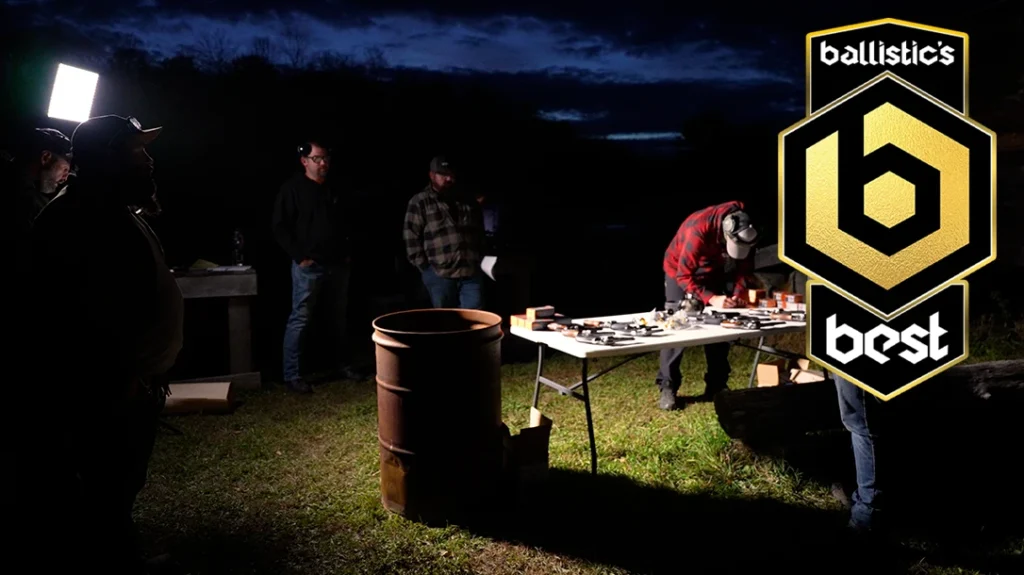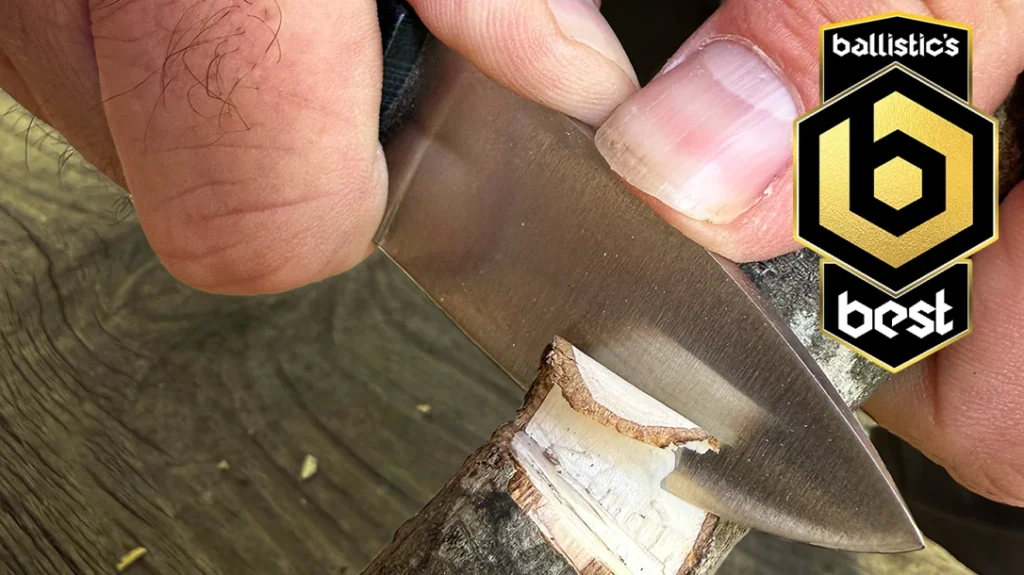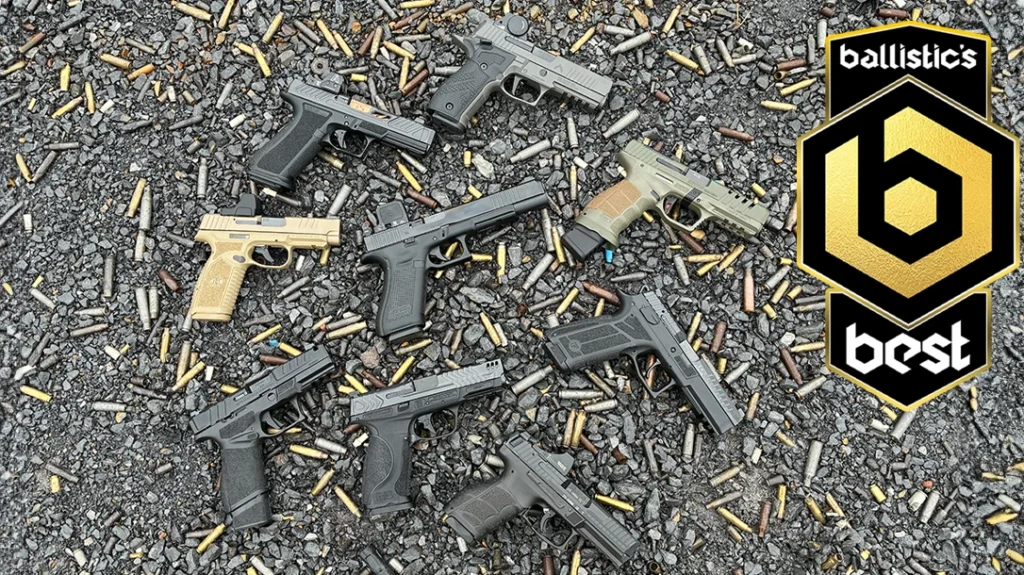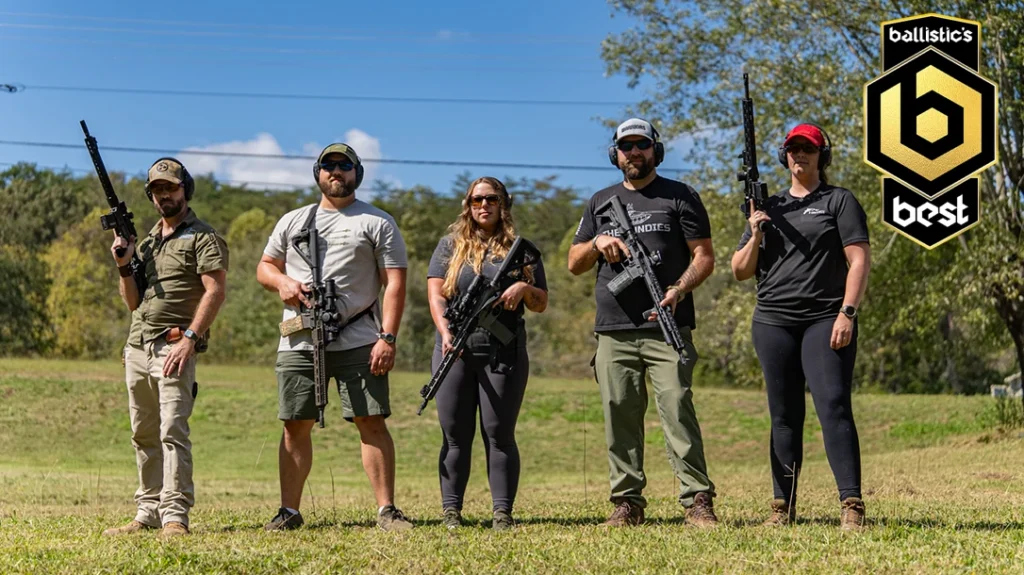The Heritage 92 lever-action line is based on Winchester’s hugely successful Model 1892 action and includes thirteen blued or stainless steel models in four barrel lengths (24-inch octagonal and 20-, 18- and 12-inch round), three stock configurations (rifle, carbine and Mare’s Leg), and four calibers (38 Special/.357 Magnum, .44 Magnum, .45 Colt and .454 Casull).
Heritage 92 Lever-Action
The Winchester Model 1892 was designed by John Moses Browning and intended to replace the company’s famous lever-action Winchester Model 1873, the Old West’s most successful pistol caliber carbine and a mainstay for personal defense and hunting deer-sized and smaller animals. Winchester’s proprietary and moderately powered chamberings for the Model 1873 (.44-40, .38-40, and .32-20 WCF) were all adopted by handgun manufacturers in the 19th century and were carried forward with the Model 1892.
Unlike the toggle action Model 1873, the Model 1892 had a vastly stronger lock-up when in battery thanks to dual, vertically sliding, locking bars that anchored the sliding breech bolt to the sides of the receiver. It was ridiculously overbuilt for its low pressure, black powder chamberings. Produced for 47 years, the Model 92 was finally dropped from the Winchester line in 1941, though the original chamberings, and the guns themselves, remained popular long afterward. The Model 92 made appearances in just about every American Western film through the 1970s.
Advertisement — Continue Reading Below

Manufacturing History
The lightweight, nimble, and fast-shooting Model 1892 was also manufactured in Spain and South America, where it was similarly popular. While a Model 1892 is no longer made in America, modern versions are produced under the Winchester brand by Miroku in Japan, Chiappa Firearms in Italy, and C.B.C (Companhia Brasileira de Cartuchos) in Brazil. C.B.C. is a multi-national firearms and ammunition manufacturing conglomerate that owns Taurus, Rossi, Sellier & Bellot, MEN, and Magtech, as well as their own production facilities.
Reasonably priced and decently built replica Model 1892 lever-actions from the Rossi factory in Brazil have been on U.S. market for at least the last 20 years by my memory, and probably longer. The Model 92’s strong action is capable of handling much more powerful .357 and .44 Magnum chamberings, which increases its practical utility for self-defense and hunting. However, I think the real driver of the Model 1892 replica renaissance in America was Cowboy Action Shooting.
Advertisement — Continue Reading Below
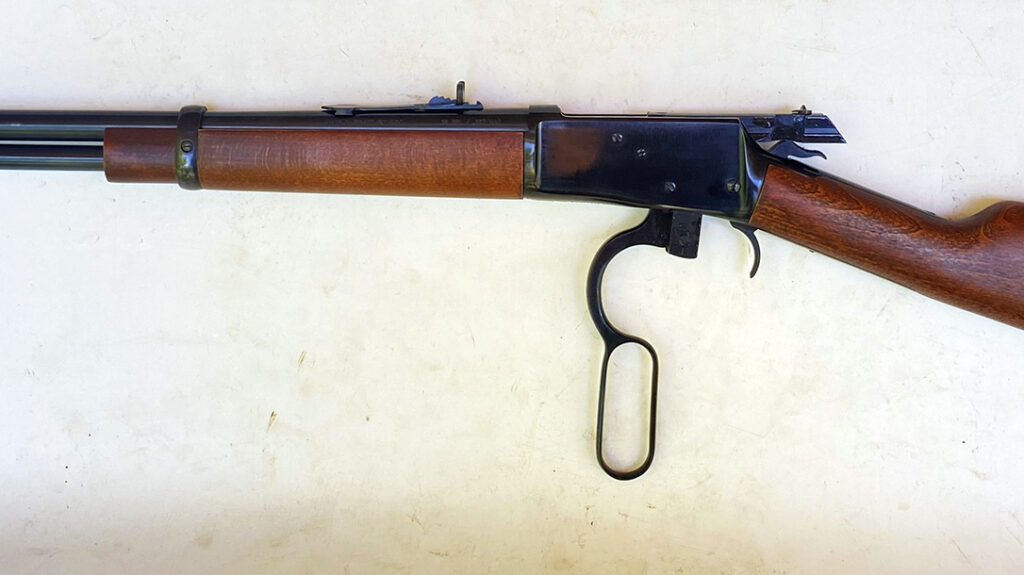
Retro Rossi 92s
I have a Rossi Model 1892 carbine and rifle, both in .44-40, bought fifteen years ago through EMF Company. These guns are great for a historically accurate shooting experience, but a little stressful to use because of the comparative rarity and expense of .44-40 ammunition and brass. Every ejected shell case must be tirelessly hunted down in the grass, and every case neck accidentally crushed through ham-handed reloading is a cause for sadness and a moment of silence. By contrast, shooting the new Heritage 92 Lever-Action in .38 Special/.357 Magnum was carefree fun. To my surprise, it cycled .38 Special and the longer .357 Magnum cartridges equally well. I lost a few cases, but I did’t care. There’s plenty more where those came from.
For testing, I choose the blued steel, 20-inch, round barrel carbine because its stock and furniture are quite close to the original Winchester carbines. The metal sculpting along the bottom and rear of the receiver differs from the original Winchester’s somewhat, and there’s a discreet little hammer block safety switch on the top, rear of the breech bolt, but it has the correct style buttplate, bands and sights, which helps it capture the historic ambiance of a working gun of the era.
Advertisement — Continue Reading Below
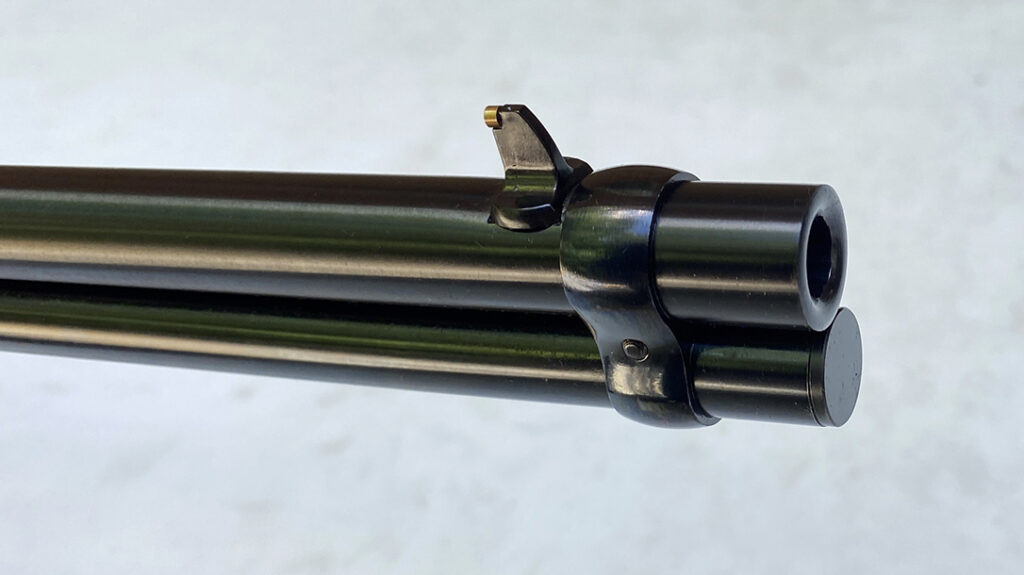
On the Range
Right out of the box, I noticed the Heritage had a fairly smooth lever-action. Rounds chambered from the carrier with the usual slight resistance as the varied ogives of their bullets were pushed home by the closing stroke of the lever. Recoil in this six-pound carbine was mild. Ejection was typical period Winchester, straight up and sometimes in your face. I hate buckhorn sights because I tend to string my shots vertically as I struggle to nestle the bead of the front sight blade consistently in the bottom of the bowl formed by the curing horns. However useful they may for compensating for bullet drop, they don’t help me do my best target shooting.
Still, at 50 yards from a sandbag rest, I was able to shoot five-shot groups averaging 2.69 inches with Hornady Critical Defense .38 Special+P, 110-grain FTX JHP; 2.88-inch groups with Federal Premium .357 Magnum,130-grain Hydra Shok JHP; and 3.53-inch groups with classic Winchester Super X .38 Special +P, 125-grain jacketed soft tip HP. The soft, exposed nose of the Super X bullet got a bit torn up passing from the loading gate into the magazine tube, and the most I could get in was six rounds before something snagged. The other FMJ bullets loaded without difficulty.
Advertisement — Continue Reading Below
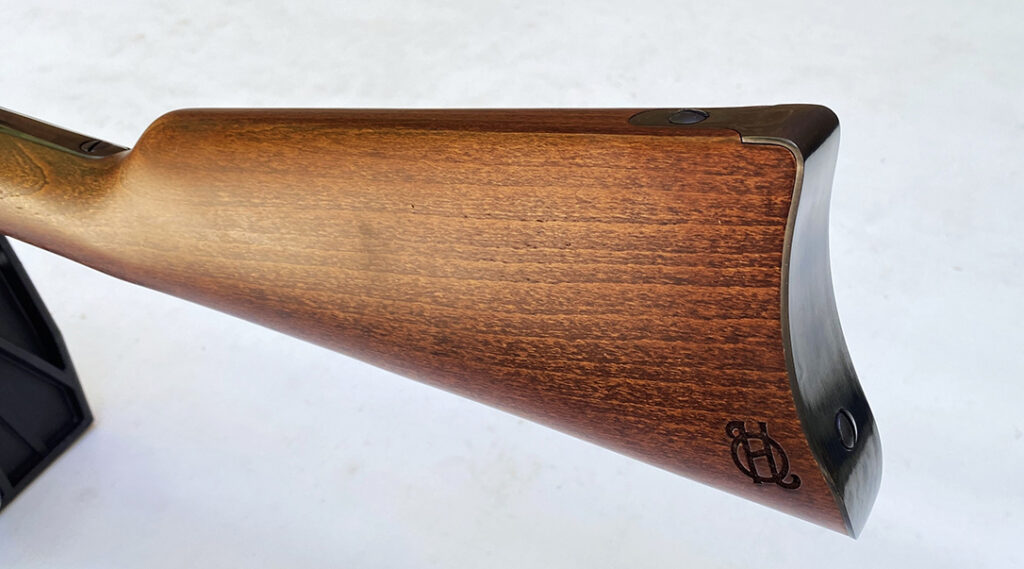
Ammo Variance on Target
It was interesting to observe the changes in point-of-impact at 50 yards with the varied loads I tested. The 130-grain Federal Premium .357 Magnum, the heaviest bullet tested, actually shot 9 inches above the point-of-aim. Its screaming 2,129 feet-per-second average velocity caused me to do a double take at the chronograph. The 110-grain FTX JHP in Hornady’s Critical Defense .38 Special +P load shot 1.70 inches above point-of-aim, averaging 1,297 feet-per-second velocity, which was 287 feet-per-second faster than the advertised handgun velocity on the box.
Finally, the 125-grain bullet in Winchester Super X .38 Special +P shot 0.93 inches below the point of aim with an average velocity of 1,238 feet per second. The overall spread for these loads spans nearly 10 inches vertically and demonstrates that you shouldn’t expect a rifle to keep a consistent point of impact when switching ammunition types. Shoot a test target to be sure and log the information into your dope book for future reference.
Advertisement — Continue Reading Below
Nicely built, attractively finished, and with an online retail price around $680, the Heritage 92 Lever-Action series is about half the price of its more historically accurate Italian or famous name brand Japanese peers, but I assure you it is not half the gun. A quick review of the ballistic performance of the loads tested, and the level of iron sights accuracy I got, show that these handy, lightweight repeaters are even deadlier now than they were in their heyday a century ago.
For more information on the other models in the Heritage 92 series, visit heritagemfg.com.
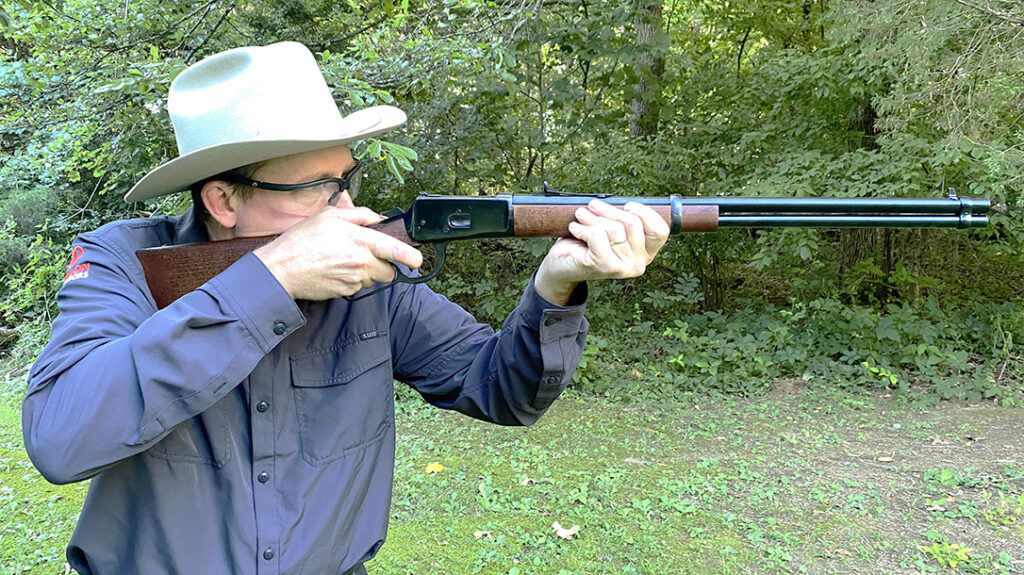
Advertisement — Continue Reading Below
Specifications: Heritage 92 Lever-Action Rifle
- Caliber: .38 Special/.357 Magnum
- Operation: lever action
- Barrel: 20 inch round profile
- Overall Length: 37.2 inches
- Weight empty: 6 pounds unloaded
- Magazine capacity: 11 rounds .38 Special, 10 rounds .357 Magnum
- Trigger: single stage, 5.5 pounds
- Controls: breech bolt mounted hammer block safety switch
- Sights: traditional open sights, windage/elevation adjustable buckhorn rear sight, windage adjustable front side blade with brass bead
- Stock: stained hardwood with Heritage logo laser cut at the toe of the buttstock
- Finish: blued (black) polished steel
- MSRP: $863 (online retail around $680)
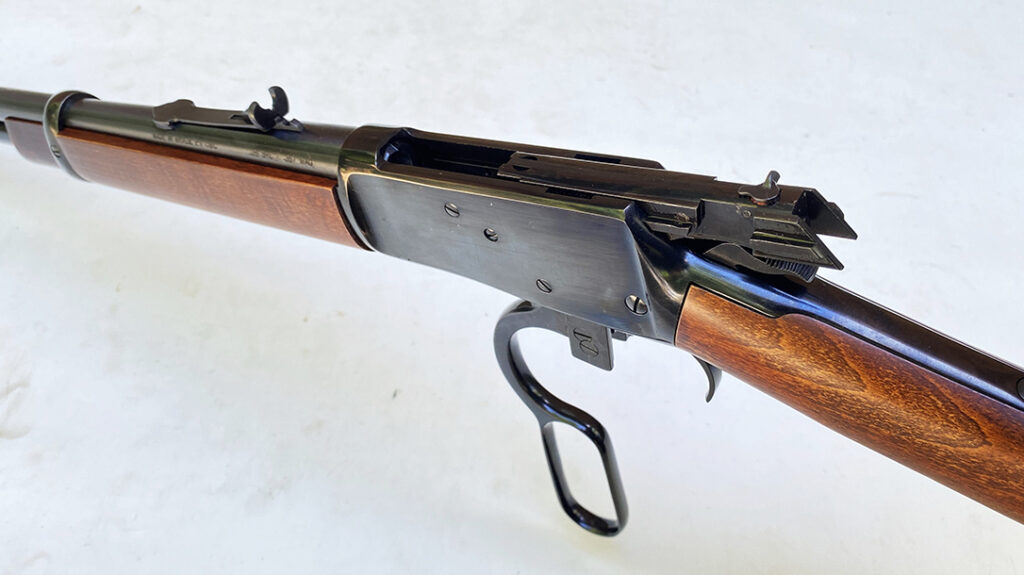
Accuracy Results
| Load | Velocity | Best Group |
| Hornady Critical Defense .38 Spl.+P, 110-grain FTX JHP | 1,297 fps | 2.23″ |
| Federal Premium .357 Mag. 130-grain Hydra Shok JHP | 2,129 fps | 2.41″ |
| Winchester Super X .38 Spl.+P 125-grain Jacketed Soft Tip HP | 1,238 fps | 3.04″ |

